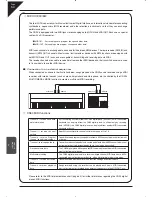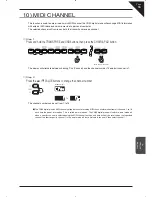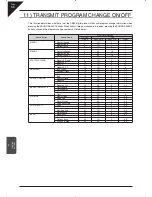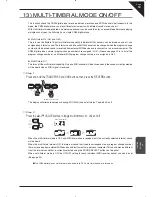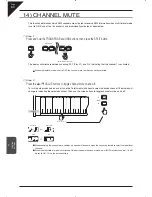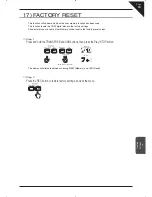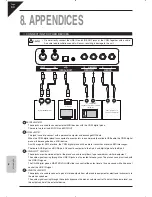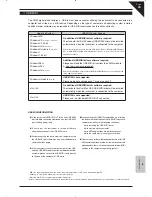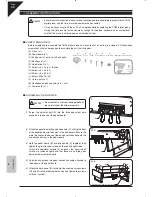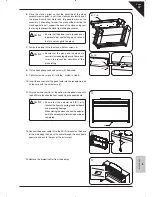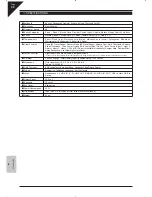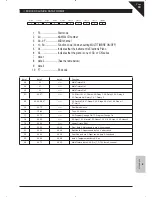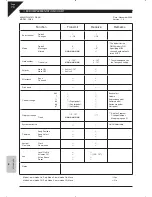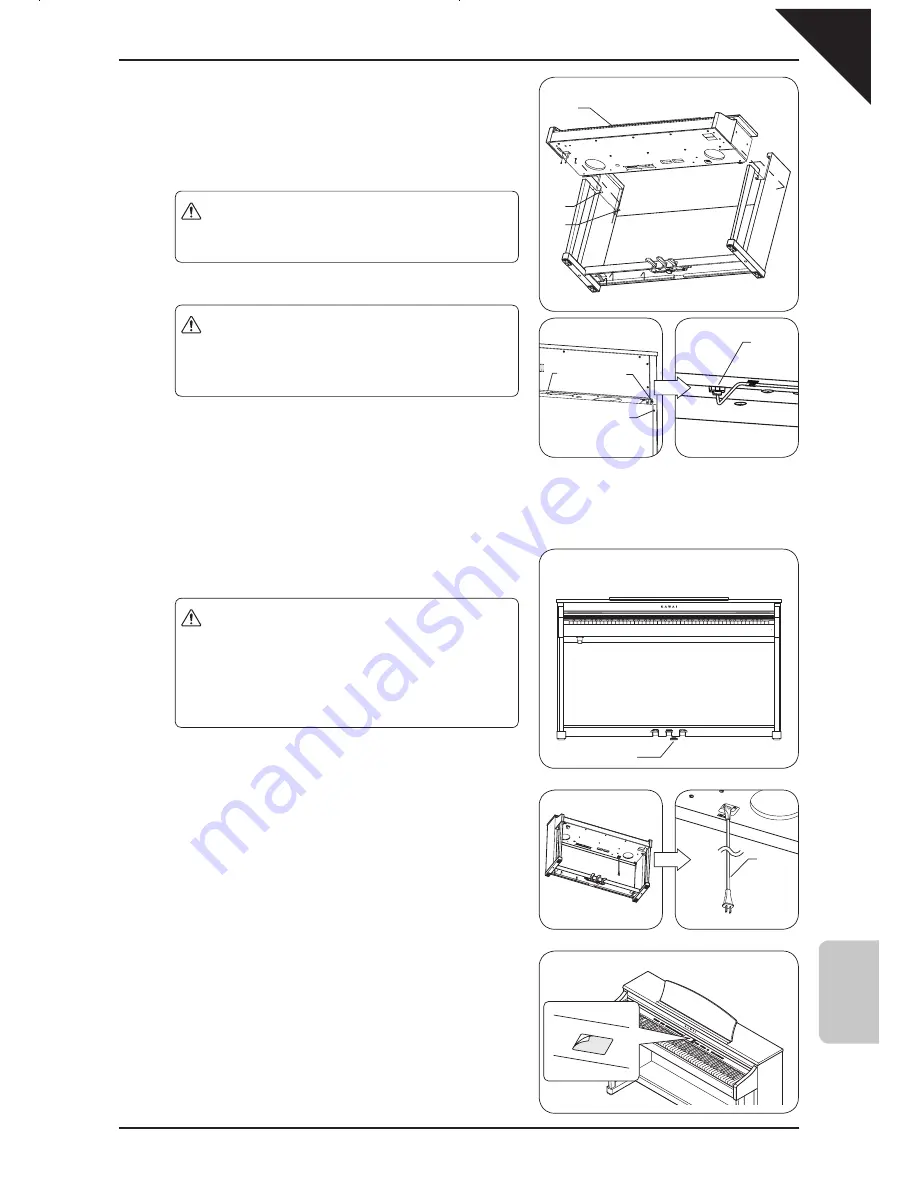
Page
67
8
APPENDICES
6.
Place the stand upright so that the backside of the stand
assembly rests against a wall, then slowly and carefully insert
the piano. Ensure that more than two people work on the
assembly. If attempting to insert the piano without resting the
stand against a wall, support the back of the stand using your
foot or leg to prevent the stand from sliding backwards.
7.
Fasten the piano (A) to the stand with four screws (I).
8.
Fix the headphone hook and screws (K) if desired.
9.
Tightly fasten the screws (H) (with the * symbol in step 5).
10.
Insert the connector of the pedal cord into the receptacle, and
fix the cord with the cord clamp (J).
11.
Turn the adjustor bolt (E) at the bottom of the pedal stand until
the bolt firmly touches the floor, supporting the pedal board.
12.
Connect the power cable (K) to the AC IN terminal on the base
of the main body, then pass the cable through the back board
aperture, and out to the rear of the instrument.
13.
Remove the protective film from the display.
Caution
y
Ensure that the piano is not dropped on an
individual’s feet, and that fingers, hands and
feet are not caught in the piano.
Caution
y
Ensure that the piano and the stand are
securely fastened together with the correct
screws to prevent the possibility of the
piano falling.
Caution
y
Ensure that the adjuster bolt (E) firmly
touches the floor, supporting the pedal board
and preventing damage.
When moving the piano, shorten the adjustor
bold (E) and readjust after moving has been
completed.
11
(E)
12
(L)
9
y
10
(J)
(J)
(H)*
Protrusion
13
6
y
7
y
8
(A)
(K)
(I)
(I)


